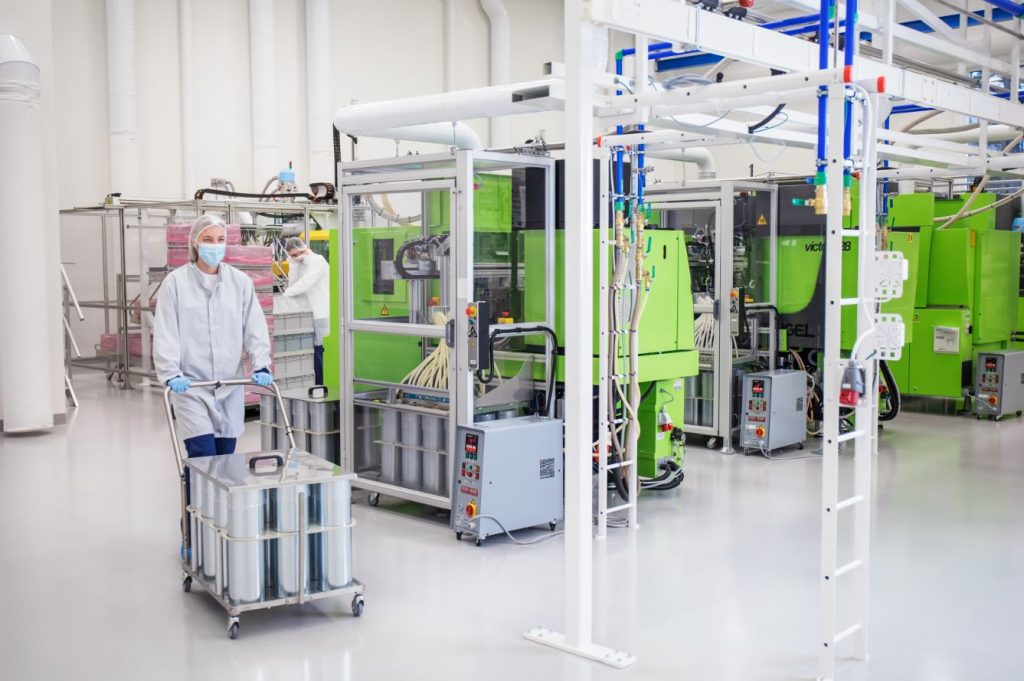7 global medtech trends in life science
As the medical device market is rapidly changing, OEMs are challenged to evolve their roles to thrive in the future of healthcare. Here are 7 global medtech trends in life science to keep you updated and ready for new market challenges, demands, and opportunities.
1. Demographic aging increases the need for medical devices
We have an expanding elderly population. The proportion of older people is increasing due to people living longer and having fewer children. According to the UN, the current world population of 7.6 billion is expected to reach 8.6 billion in 2030 and 9.8 billion in 2050. Along with an aging population comes age-related diseases such as cancer, cardiovascular disease, Alzheimer’s disease, diabetes, and related mobility disability. Consequently, also the need for medical devices that improve the quality of life increases.
2. The medtech industry invests more in AI and ML
As big data is becoming more assessable and manageable, artificial intelligence (AI) and machine learning (ML) are increasingly applied within healthcare. According to GlobalData forecasts, the market for AI and ML platforms will reach $52B in 2024, up from $29B in 2019. In the past few years, we have seen some of the largest players in the medtech industry invest in AI and ML. These technologies can potentially transform many aspects of patient care such as diagnosing, managing, and treating diseases and health issues.
3. A shift from mass-production to patient-specific implants
Patient-specific implants are a growing and advancing field within medtech. The medical device industry is slowly shifting from mass production to mass customization. Every body is different, and the closer an implant can mimic the natural body, the better. With the surgical benefits and potential for customized implants, more manufacturers now seek to make them more mainstream. We are already seeing major manufacturers, software companies, and hospitals partnering to produce custom implants for more unique cases.
4. Specialization in production technologies is coveted
The outsourcing trend in medical devices remains strong. While OEMs are looking for strategic CDMOs, there is also an increased demand for partners specialized in different production technologies – combining polymers and metals, for example. In addition to cost-efficiency, flexibility, and reduced time to market, OEMs face several challenges unique to their industry. Production technologies must be well adapted to high demands on complex geometries, precision, advanced surface treatments, and exacting hygiene requirements.
Also read: Life science: Advanced injection molding and metal machining in demand
5. Increased demand for medical device cleanroom production
A cleanroom environment is one of the keys to producing medical devices that meet today’s regulations for quality and safety. While focusing on the core business and reducing time to market is important for OEMs, we are seeing more medtech companies looking to outsource cleanroom production to a specialized CDMO. There is an increased demand from the medical device market in general and the diagnostics market in particular.

6. MDR puts high demands on the medical device industry
In 2021, the new MDR came into effect, aiming to increase safety and efficiency in the EU medical device market. To ensure products are MDR compliant, more OEMs turn to CDMOs to assess their MDR readiness, analyze their existing and future product portfolios, and accelerate time to market. CDMOs that understand the entire requirement and have the capability set are also trusted to take responsibility for more steps throughout the value chain; from design and manufacturing to packaging, distribution, and logistics.
7. The pandemic footprint in life science will linger
Since the coronavirus outbreak, the medtech industry has experienced great upheaval. With the increased need for intensive care, the demand for life-sustaining equipment and medical devices such as ventilators became exceptionally strong. This led to substantial delays in non-urgent procedures impacting the supply and demand for many medical devices. Although the industry is moving into the recovery and thrive phase, the pandemic footprint will linger, and a central challenge will be rapidly scaling up production to meet global needs.
There is opportunity on the horizon
Even though there are many challenges to navigate in the medical device industry, there is opportunity on the horizon. One key to success will be to build strong partnerships. Smart outsourcing – whether in the early design and development phases, manufacturing, or support after your products hit the market – can add the expertise, capabilities, and capacity to move faster and enter the market more competitively.
Are you curious to find out what that kind of partnership could look like? Don’t hesitate to reach out to our team at Elos Medtech.
